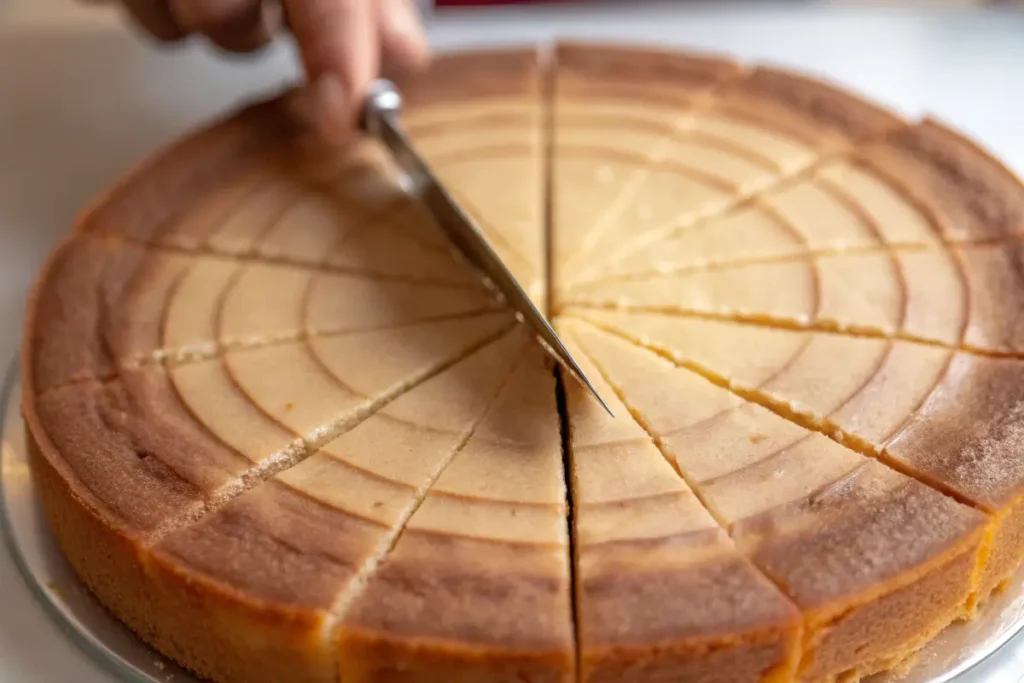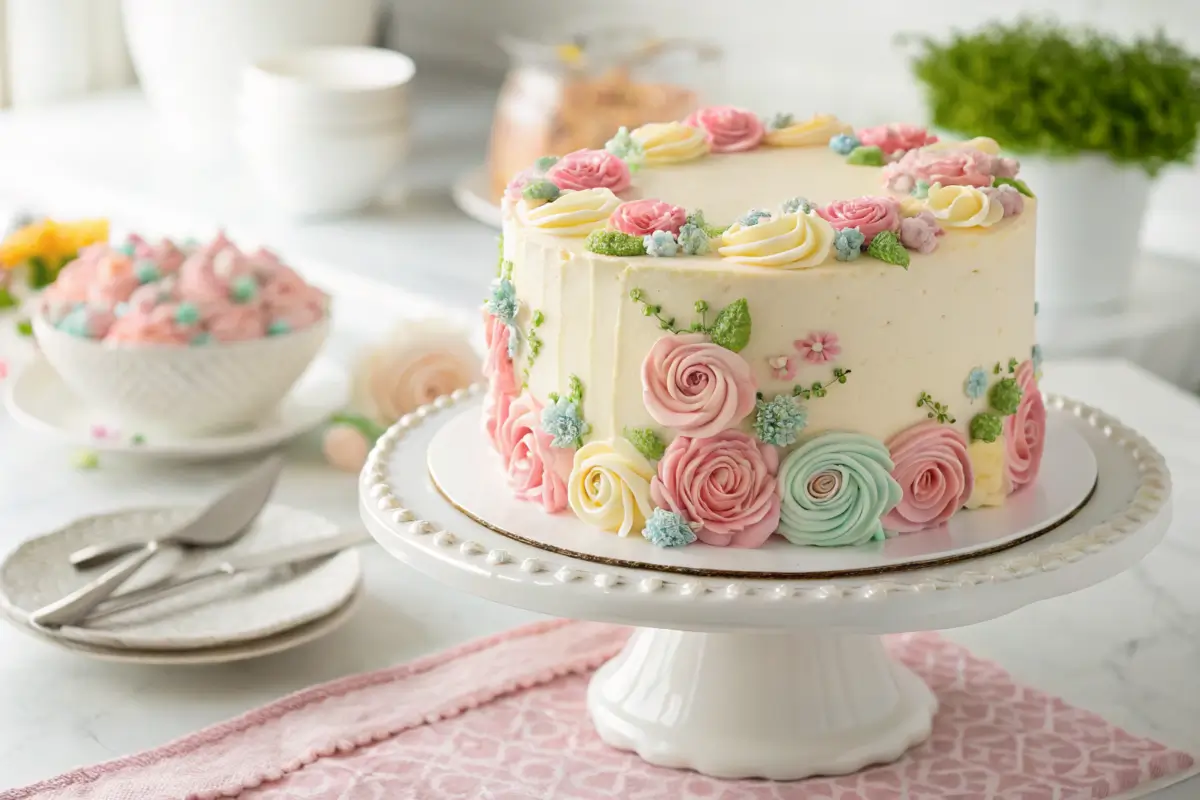When you’re planning a celebration, one detail that’s easy to overlook is the cake size. Picking the wrong size could mean running out of cake or wasting leftovers. This guide dives deep into choosing the ideal What size round cake for 20 guests, offering tips on portions, servings, and even cake-cutting techniques. Let’s explore the sweet details!
Introduction
What Is the Best Cake Size for 20 Guests?
Choosing the perfect cake size isn’t just about numbers; it’s about making the celebration memorable. Whether it’s a birthday, wedding, or any gathering, the cake often takes center stage. To serve 20 guests without over or underestimating, you need to consider factors like standard serving sizes, cake shapes, and even the appetite of your crowd.
Imagine hosting a party where everyone gets a delicious, equal slice, and no one misses out! That’s why understanding the relationship between round cake sizes and serving portions is crucial. From professional baker standards to practical tips, this article breaks it all down to help you confidently choose the right size for your event.
Understanding Cake Portions
What Are Standard Cake Serving Sizes?
Serving sizes for cakes are not one-size-fits-all. The standard slice size is often a 1×2-inch piece, a perfect balance of indulgence without overdoing it. But for more generous portions, such as those for family-style celebrations, 2×2-inch slices might be preferred. Round cakes are particularly versatile, making them the go-to choice for serving multiple guests.
In the baking industry, portion standards help ensure you know how many servings to expect from each cake. A single-layer 8-inch round cake typically serves 12–16 people when sliced using the standard 1×2-inch method. This portion standard simplifies planning and prevents the dreaded scenario of running out of cake before everyone has a slice. For larger gatherings like weddings or formal events, sticking to these guidelines ensures no guest is left disappointed.
How Many Servings Does a Round Cake Provide?
The number of servings depends on the cake’s diameter. A 6-inch round cake offers about 8 servings, making it ideal for intimate gatherings. An 8-inch cake increases that to approximately 12–16 servings, while a 10-inch cake comfortably serves 24–28 guests. Larger cakes, such as a 12-inch round, can provide 40–45 servings, which is perfect for larger events.
The magic of round cakes lies in their even distribution. Unlike square or rectangular cakes, they cut beautifully into uniform pieces, which maximizes their serving potential. Plus, round cakes often appear more elegant and are easier to handle when decorating.
To ensure you have enough cake, factor in guest appetite and the event’s tone. For instance, casual backyard parties might require more generous portions, while formal receptions stick closer to standard sizes.
How Does Cake Shape Impact Serving Size?
Cake shape plays a surprising role in serving sizes. While round cakes are the most common, square cakes yield more servings of the same diameter. For example, an 8-inch square cake offers around 20 servings compared to an 8-inch round cake’s 12–16.
Rectangular cakes, often used for sheet cakes, are ideal for larger events. They allow for straight, even cuts and provide a higher slice count. On the other hand, round cakes are perfect for smaller occasions where aesthetics matter. Ultimately, the choice of shape comes down to balancing visual appeal and practicality for your event.
Calculating the Perfect Cake Size for 20 Guests
How to Calculate the Right Cake Size?
Finding the right round cake size for 20 guests requires a little math but pays off with perfectly proportioned servings. The general rule of thumb is that a single slice measures about 1×2 inches, which makes it simple to calculate the total servings a round cake can provide. Use this formula:
Cake Diameter x Cake Layers = Total Servings (approx.)
For example, a single-layer 10-inch round cake serves approximately 28 people using the standard slice size. If your cake has multiple layers, the serving count increases proportionally, as each layer adds more volume to each slice.
However, adjustments may be necessary based on the crowd’s preferences. If your event is casual, people might prefer larger slices, so opting for a bigger cake (or even a tiered one) ensures everyone gets enough. Conversely, for formal gatherings, smaller, refined portions may suffice, sticking to the calculated servings.
What Size Round Cake Works Best for 20 Guests?
round cake size For 20 guests, a 9-inch or 10-inch round cake is the sweet spot. These sizes provide between 20–28 servings, depending on the thickness of the slices and the number of layers. A single-layer 9-inch cake offers just enough, but adding a second layer guarantees there’s plenty to go around, even for a few seconds.
Using a cake-cutting guide simplifies the process of portioning the cake. Imagine a 10-inch cake sliced into neat concentric circles, followed by dividing the outer ring into equal parts. This method ensures uniform slices and avoids the awkwardness of uneven portions.
Visual aids like serving charts are invaluable for large gatherings. They help you plan the exact number of slices, minimizing waste while ensuring all your guests are satisfied. Choosing the right size, especially with multilayer cakes, provides flexibility for varying appetites or last-minute RSVPs.
Factors to Consider When Choosing Cake Size
When deciding on a round cake size for 20 guests, consider the type of event. For formal occasions like weddings or anniversaries, smaller, delicate slices are typical, meaning a single-layer 9-inch cake might suffice. At casual events, larger slices are expected, so a two-layer 10-inch cake could be the better choice.
The type of cake and frosting layers also matter. Rich, dense cakes like chocolate or fruitcake tend to be served in smaller slices, while light, fluffy sponge cakes often warrant larger portions. Similarly, cakes with thick, decadent frosting layers might require smaller servings to avoid overwhelming guests.
Finally, think about your audience. Kids often crave bigger portions, while adults may opt for moderation. A mix of appetites among your guests might call for an extra tier or a backup cake to ensure everyone’s needs are met.
Practical Tips for Serving Cakes
How to Properly Cut a Round Cake for Maximum Servings

Cutting a round cake properly ensures you get the maximum number of servings, and it’s easier than you might think! The key lies in using the right technique and tools. Forget the traditional “wedge slice” approach; instead, consider the more efficient “concentric circle” method. Start by cutting an outer ring about 2 inches wide, then slice that ring into evenly sized portions. Repeat this process inward until you reach the center.
To achieve consistent slice sizes, always use a sharp, non-serrated knife. Wiping the blade clean between cuts prevents the cake from sticking and keeps the slices neat. A cutting guide or template can also help you visualize the portions before cutting.
For multilayer cakes, cut each layer separately to maintain even portions. This method not only ensures uniform servings but also minimizes the risk of the cake crumbling during slicing. If serving at a formal event, use a serving spatula to neatly transfer slices to plates.
How to Handle Multiple Tiers for Larger Events
For larger gatherings, opting for a tiered cake can be both practical and visually stunning. Tiered cakes offer flexibility, as each tier can cater to a different guest count. For instance, a 10-inch bottom tier and an 8-inch top tier can serve about 50 people in total.
Tiered cakes are also easier to manage for diverse tastes. You can mix flavors between tiers or accommodate dietary restrictions without needing multiple separate cakes. Moreover, they provide a grand presentation, perfect for weddings and milestone celebrations.
When choosing tier sizes, calculate based on guest count and serving size standards. This ensures you have enough without over-ordering. A good rule of thumb is to have smaller tiers for top layers, as they’re often saved for decoration or special traditions, such as anniversary keepsakes.
FAQ : What size round cake for 20 guests
How Many Does an 8-Inch Cake Serve?
An 8-inch round cake is one of the most versatile options for small to medium gatherings. When cut into standard 1×2-inch slices, it typically serves about 12–16 people. This serving size is ideal for casual get-togethers or intimate celebrations where portions are modest. However, if larger slices (like 2×2-inch portions) are preferred, the serving capacity reduces to 8–10 guests. Learn More
The number of servings also depends on whether the cake has multiple layers. A single-layer 8-inch cake offers fewer servings compared to a double-layer cake, which doubles the volume without increasing the diameter. Keep in mind that appetite and event type also play a role—smaller slices are often sufficient for formal events, while casual settings might call for larger portions.
How Many Pieces Can You Get Out of an 8-Inch Cake?
Maximizing the servings from an 8-inch cake is all about the cutting technique. The traditional “pie slice” method results in uneven portions and fewer slices. Instead, try the “grid method.” Start by slicing a ring about 2 inches from the edge of the cake. Cut this ring into equal-sized pieces, then repeat with the inner sections until the entire cake is portioned. Learn More
For multilayer cakes, consider slicing each layer individually. This method not only provides clean slices but also ensures that each serving includes an even amount of frosting and filling. Using a sharp knife and wiping it clean between cuts guarantees neat and precise slices.
With proper cutting, you can achieve up to 16 uniform servings from a standard 8-inch round cake. Using guides or templates can make the process even more efficient, especially for larger events.
How Many People Does an 8-Inch Cake Cost?
The price of an 8-inch round cake varies based on factors like bakery location, flavor complexity, and decoration style. On average, a simple 8-inch cake with basic frosting and minimal design costs around $25–$40. Premium cakes, featuring intricate decorations, gourmet flavors, or custom designs, may range from $50–$100.
Tiered or multilayer 8-inch cakes often cost more due to the added labor and ingredients. Specialty bakeries may also charge extra for dietary accommodations like gluten-free or vegan options. If the cake includes unique elements like fondant, hand-piped decorations, or edible toppers, the price increases accordingly.
To estimate costs, communicate with your local bakery about your needs. Many bakeries offer serving and design recommendations based on your guest count and budget. Remember, while prices may seem high, investing in a quality cake ensures a delicious and memorable experience for your guests.
Conclusion
Final Thoughts on Choosing the Right Cake Size
Selecting the perfect cake size for 20 guests doesn’t have to be a daunting task. By understanding standard serving sizes and using practical cake-cutting techniques, you can ensure that every guest gets a delicious slice. For a crowd of 20, a 9-inch or 10-inch round cake is typically the best choice, offering enough servings while maintaining an elegant presentation.
Consider factors like the type of event, the richness of the cake, and your guests’ appetites when making your decision. Formal events may call for smaller, refined slices, while casual gatherings might demand more generous portions. Multilayer or tiered cakes also provide flexibility and visual appeal, especially for larger or more festive occasions.
By planning thoughtfully and applying these tips, you’ll serve just the right amount of cake—keeping everyone happy and ensuring no slice goes to waste. With these insights, your event is sure to be a sweet success!

